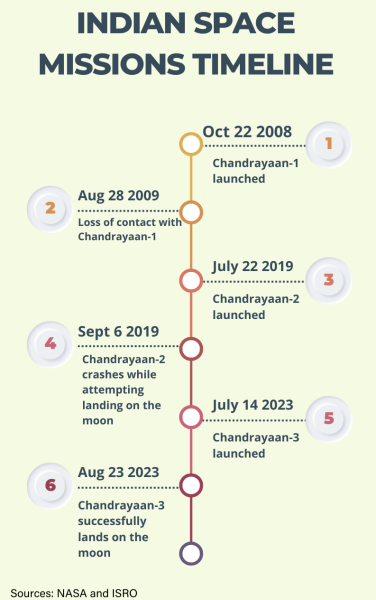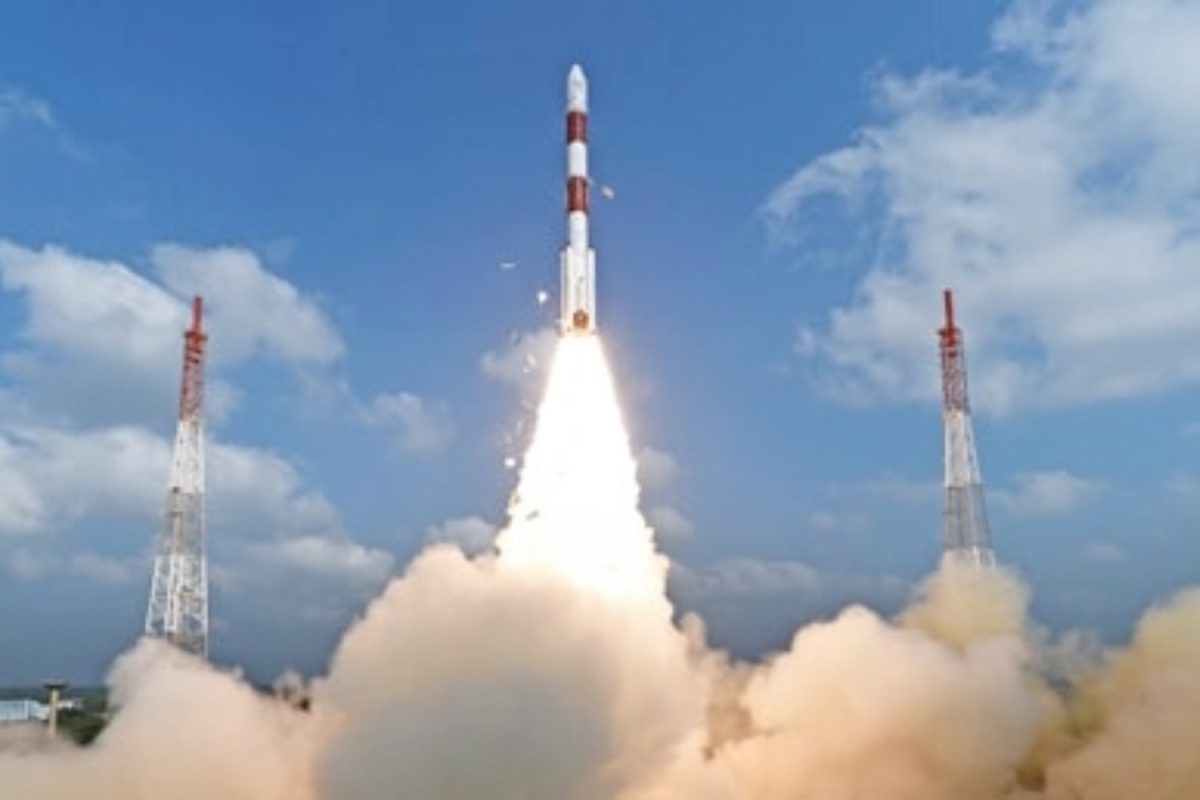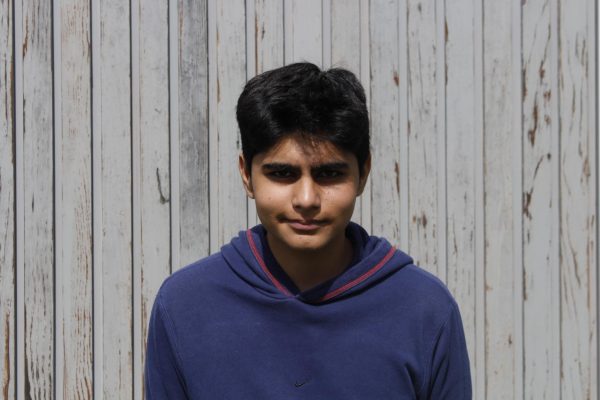India made history Aug. 23 when the Chandrayaan-3 rocket touched down on the moon, according to Sky News. India is the first country to land on its south pole, following three countries with previous successful landings.
Danny Joseph (’26), an astronomy enthusiast who has worked on creating his own rockets, said he was thrilled to hear about the landing as he knew it is very difficult to execute, especially on the south pole of the moon.
“Landing on the moon is an incredible feat,” Joseph said. “It’s physically tough to have a soft landing on the moon, but it’s even more incredible to do it on the South Pole since it has not been done before.”
Moreover, Om Agarwal (’25), who is from India, said he is curious about further discoveries to be made about the moon’s surface.
“I was kind of excited,” Agarwal said. “I thought it was pretty cool because I know on the south side of the Moon, there might be ice or some sort of ice water present. So I was really excited because if there is ice, there are a lot of cool possibilities in the future.”

Astrophysics Teacher Seth Freedman said the landing could advance space technology by allowing organizations to utilize the moon’s resources.
“If there is frozen water on the moon, what are its purposes?” Freedman said. “You could use it as a fueling station for further exploration like getting to Mars. There could also be minerals that we have never found before, and hopefully, it advances our understanding and capabilities.”
Moreover, Freedman said the successful landing was vital for India’s future space ambitions.
“For India, it’s huge,” Freedman said. “It gives them a great foothold, and allows them to really secure their place amongst other nations involved with space, which India didn’t really have before.”
According to The Hindustan Times, India’s budget for Chandrayaan-3 was $75 million, while Russia’s budget for Luna-25, a similar mission that failed, was $200 million.
Agarwal said he was surprised to hear about the low budget of the Chandrayaan-3.
“It shocked me, because things like this tend to be really expensive,” Agarwal said. The fact that they pulled it off with such a low cost and efficiency shows that the program can do a lot of great things with proper funding.”
Furthermore, Lauren Marshall (’25), leader of the Astronomy and Physics Club, said India’s efficient use of funding may encourage other space organizations to follow suit.
“It provides inspiration for different countries and organizations that haven’t yet achieved space travel or a specific type of mission to become successful,” Marshall said. “Secondly, it also might help organizations that currently use a lot of funding to be more sustainable with what they have.”
[Chandrayaan-3] provides inspiration for different countries and organizations that haven’t yet achieved space travel or a specific type of mission to become successful.
— Lauren Marshall ('25)
According to The Times of India, more women participated in the Chandrayaan-3 mission than any other previous Indian space projects. More than 100 women played a key role in all aspects of the mission, which Joseph said made the rocket’s success a unifying moment for citizens.
“I think it’s wonderful we have everyone included,” Joseph said. “It’s more representative of the whole country coming together, as this was a moment of national pride for all Indians.”





